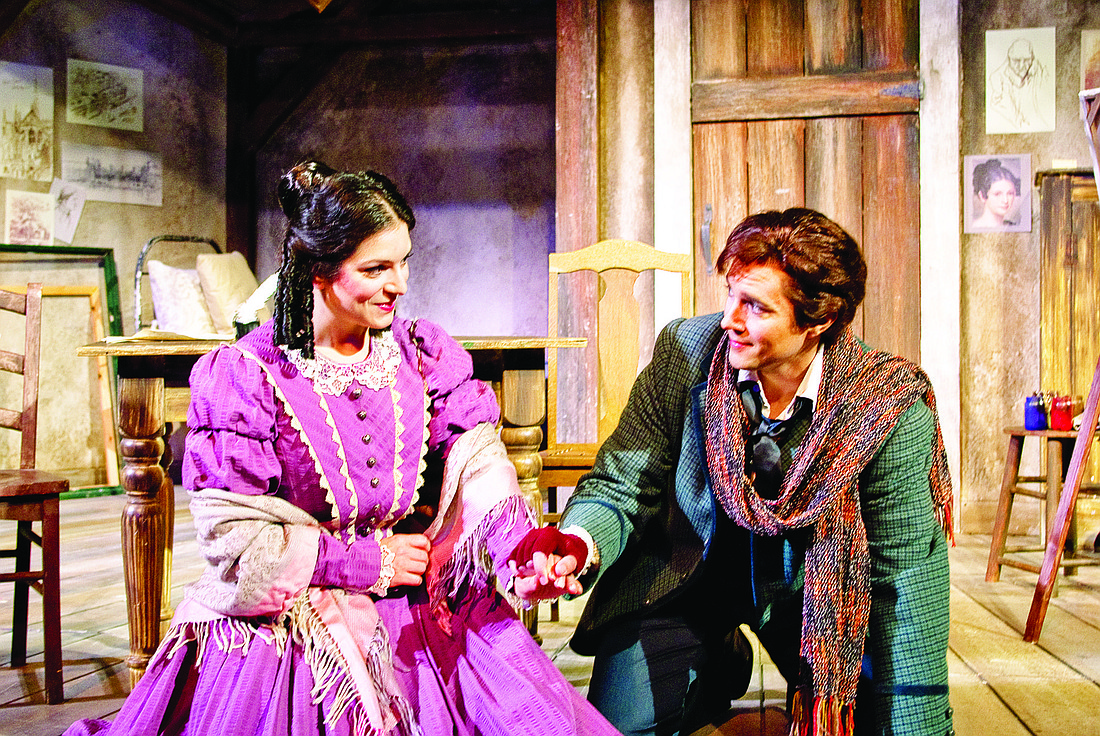- January 15, 2025
-
-
Loading

Loading

For the umpteenth time, I cried when Mimi died, proving everything old is new again in opera, especially in a beautifully shaped “La bohème,” with a stellar cast, excellent orchestra and emotionally affecting sets and lighting. That’s what Sarasota Opera is offering as its opening production, and, no matter how many times you may have seen it, it’s worth another visit.
Puccini really knew what he was doing. His music transports us in ways that would make contemporary playwrights froth at the mouth; his way with harmonies and melodies is as affecting as Shakespeare’s insights into our hearts. Puccini took a libretto by Giuseppe Giacosa and Luigi Illica and turned it into one of the most important love stories since “Romeo and Juliet.” His characters are people we know; they’re us in 19th-century dress with Italian temperaments. And when they hurt, we ache. When they celebrate, we rejoice. When they die, they take a little bit of us with them.
In Sarasota Opera’s production, staged with empathy and understanding of each character by Stephanie Sundine, we leave the theater mourning Mimi’s tragic death, and we grieve for her friends, especially her on-again, off-again lover, Rodolfo, a ne’er-do-well poet whose dreams are significantly larger than his talents.
“La bohème” is an opera that grows its characters. From the first-act garret and second-act café, where they frolic like adolescents on their own for the first time, to the chill wintery scene of the third act when Rodolfo’s true character, that of a frightened, phlegmatic, young man and Mimi’s illness come perilously close to the surface of reality and, finally, the fourth act in which Mimi dies and Rodolfo grows up, we are witnessing on the wings of glorious song, the lives of people who could be you and me.
Putting aside a few opening-night jitters that quickly calmed into a well-done production, this was an impressive cast. Harold Meers cut a handsome figure with a sturdy tenor sound, both of which should take him far in his career. His bohemian roommates — Marcello, a painter (Grant Clarke), Schaunard, a musician (studio artist Matthew Hanscom), and Colline, a philosopher (the ever-present Young-Bok Kim) — made for a well-matched assemblage of singing actors, each with an excellent voice and each drawing his character with well-defined and touching humanity.
Mimi, portrayed with warmth and understanding by Maria D’Amato, had a lovely mix of youthful yearning and mature resignation. Her voice is rich and dark, like the aroma of morning coffee, and her spinto soprano has a marvelous lower extension that manages to retain its gloss through the middle and lower passages of her voice.
But the standout performer of the evening was Carelle Flores, whose Musetta was enchanting, fun, lively and empathetic. Flores is a studio artist with tremendous promise as a singer and actress. Her energy and apparent joy in being on stage were like spotlights on talent. We remember her fondly as Adele in the company’s “Fledermaus” about five years ago and are thrilled to see her growth since then. Her well-produced voice carried her above the vocal lines into the true character Musetta, the only person in this opera who grows and changes from flighty youthfulness into a mature, caring adult.
In smaller roles, Adam Bielamowicz’s Parpignol, Carlos Monzon’s Alcindoro, Zack Rabin’s Custom Sergeant and Zachary Altman’s Customs Guard were well-sung and well-acted. The kids and chorus did a fine job. Benjamin Gelfand’s portrayal of Benoit seemed misconceived, although he sang and acted his part well; he was much too young and dashing to come across as the crotchety, old, hapless letch-of-a-landlord.
David P. Gordon’s scenery is enchanting. That may seem like a strange way of describing sets for “La bohème,” but his clever depictions of Dali-esque picture frames dangling on the walls of the garret and the bone-chilling grayness of the outskirts of Paris lent a particular impression on the production that added to the overriding desperation of the bohemians. Howard Tsvi Kaplan’s costumes were traditional and spot-on.
Finally, the orchestra, under the direction of Victor DeRenzi, gave support, warmth and, particularly in the last two acts, great breadth and sound to the goings-on up top.
Puccini’s “La bohème” is timeless and bears endless encounters. Sarasota Opera’s production stands the test of time and should be revisited often.